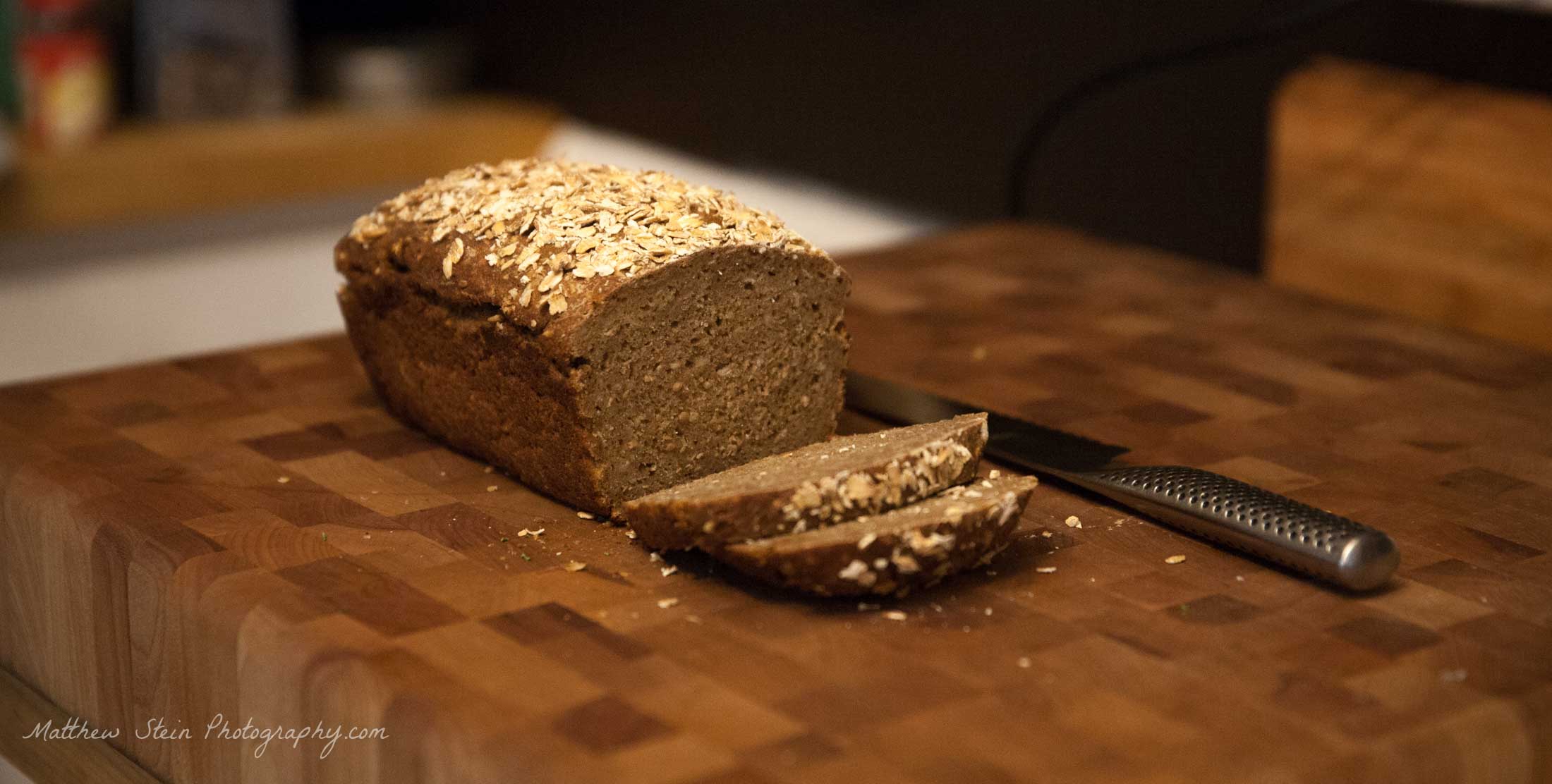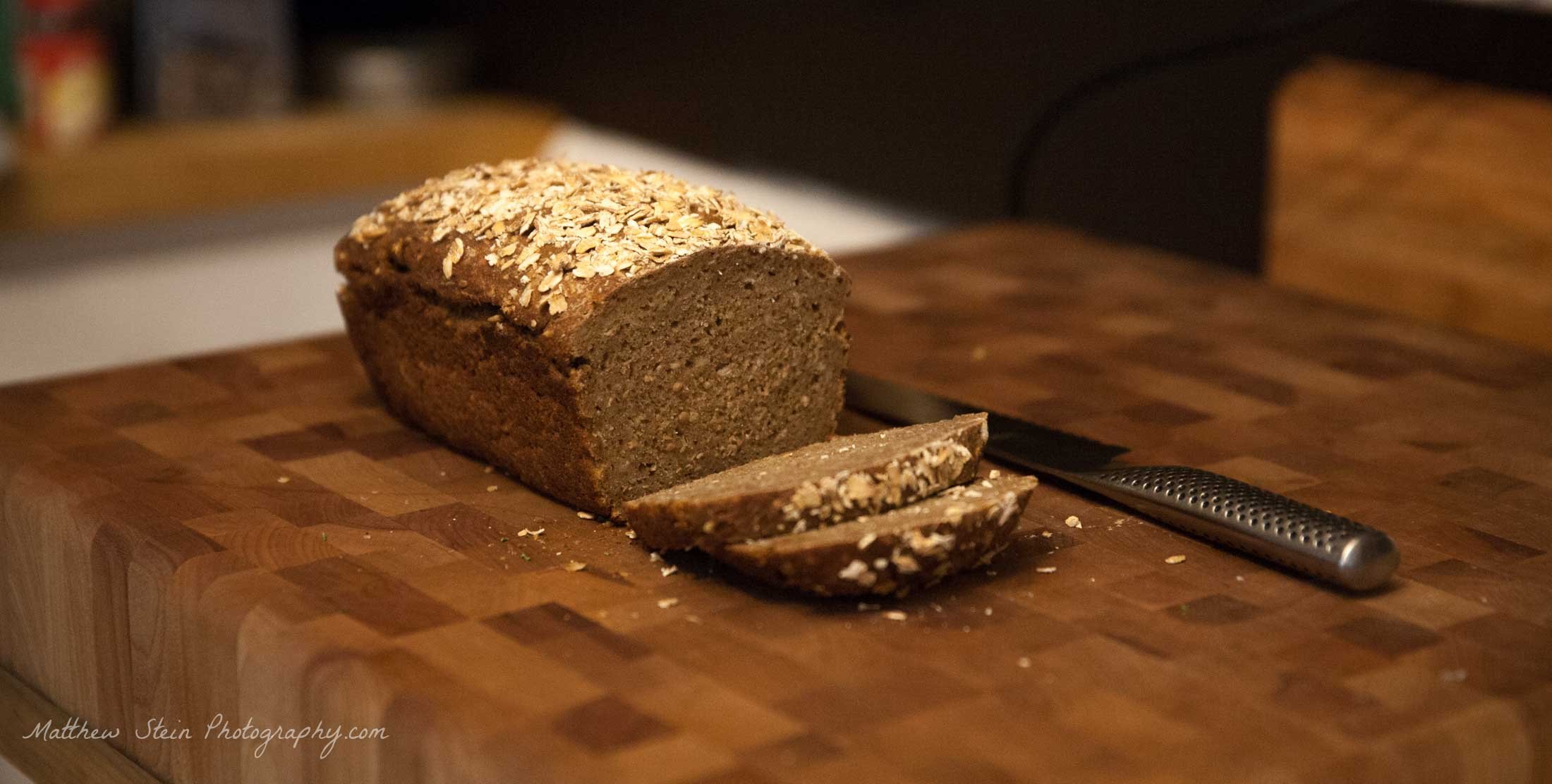Clouds live outside.
Clouds don't belong in indoor pictures. This was taken on stage just before read more

sets, photos
 10
PHOTOS
10
PHOTOS
 10
PHOTOS
10
PHOTOS
 10
PHOTOS
10
PHOTOS
 10
PHOTOS
10
PHOTOS
 10
PHOTOS
10
PHOTOS
 10
PHOTOS
10
PHOTOS

Matthew Stein, Posted Mar 19, 2020 9:01:49 AM
Inspired by The Rye Baker by Stanley Ginsberg, my interest grew in learning how to handle this grain. Rye is a temperamental mistress, she forces you to work at her pace. If you mix up the temperature or pH, then she will reward you with a brick instead of bread.
Once my wife got sick of all the rye bread I was baking, she asked for an oatmeal loaf. I made a few of those, and then started looking for an oatmeal rye combo. The internet provided nothing. So, I set to developing my own recipe.
To keep it simple, I had 3 goals:
PM day 1
Weigh the rye flour in a 5 qt KitchenAid mixing bowl, then add the boiling water. Mix until there are no dry clumps remaining. Cover with a kitchen towel and set aside for 8-12 hours. Now is a good time to feed your sourdough starter.
PM day 1
AM day 2
Mix all the ingredients in the mixing bowl, and poke at it with the paddle attachment until its mostly incorporated. Attach the paddle attachment and turn on the stand mixer.
Mix at low speed (KA2) for 2 minutes. Scrape down the bowl, make sure there are no pockets of dry flour or oats.
For 2 more minutes, mix at low speed (KA2) again. Scrape down the bowl again.
Mix for 4 more minutes (8 minutes total.) Prepare your loaf pan by rubbing 1/2 Tablespoon of butter all over the inside. You should have a sticky wet mass. Scrape the dough out onto a wet cutting board or bench. Wetting it down will help prevent the dough from sticking. Shape the dough into a cylinder as long as your loaf pan. Carefully transfer the dough into the loaf pan. With a wet spatula, smooth out any bumps or irregularities in the dough's surface.
Use a pastry brush and water to moisten the top surface of the dough. With a baking lame, Cut one slash lengthwise down the center of the dough, 1/4 inch deep. Top with 15g of rolled oats.
Cover with a kitchen towel, and allow to proof and rise for 8-12 hours. Ideally, the temperature of the dough would remain between 68-74f. In a cooler space, it will take longer to rise.
Preheat your oven to 450f. Bake, without steam, for 25 minutes. Lower the oven temperature to 400f, and bake for an additional 25 minutes. When it's fully baked, it will have a hollow sound when tapped on the bottom of the bread. Remove it from the pan, a flexible mini-spatula helps to do this. Cool on a rack for at minimum 1 hour, preferably overnight. Enjoy.
This bread has a huge depth of flavor from the rye and oats. The scald helps develop the nuttiness and rich texture from the rye. Using two kinds of oats you get additional texture as well as a sweetness that is enhanced by the molasses. You can enjoy this bread simply with butter, or load it up with Gravlax-cured salmon and mustard dill sauce.

Clouds don't belong in indoor pictures. This was taken on stage just before read more
Love it or hate it, Pokemon Go is everywhere. If you hate it, then you're probably not reading this. You also don't care how to take better pictures within ... read more
Inspired by The Rye Baker by read more
Comments